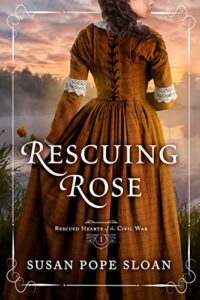One little-known event of the Civil War occurred just before Sherman’s famous campaign to capture Atlanta. At the time, this event evoked a good deal of outrage in the North as well as in the South. Unfortunately, as the war continued for another ten months (or more), people soon forgot about the incident.
It was early July of 1864 when Union General Kenner Garrard followed Sherman’s orders to destroy the cotton and wool mills in Roswell and New Manchester, Georgia. The mills produced fabric that went into Confederate blankets and uniforms, known as Roswell Grey. Since most of the mill workers were women, the mills continued to run—even after the owners and managers fled those towns.
When Garrard reported his successful destruction of the mills, Sherman sent further instructions: arrest the workers, both male and female, and send them to Marietta, where Sherman had set up temporary headquarters. When the workers arrived, the army would put them on trains going north. The army did allow the workers’ families to accompany them. Though estimates of the number of workers vary, the usual consensus puts it at about 400 female workers from Roswell. The number of men in the group was fewer than ten, with the remainder of the male population serving elsewhere in the Confederate army.
Commentators have disagreed as to the motive or effect of this action. Some argued that it was extreme punishment of civilians, who simply went on working to keep their families fed and clothed. Others commended Sherman for removing the women to a safer location where he expected them to find employment.
Sadly, when the women arrived in Louisville, Kentucky, they found the city already teeming with refugees fleeing the South as the war dragged on. With no skills other than mill work, only a few found employment as domestic servants. Others had to depend on the charity of the local population for food and medicine. The building that served to house them had no heat or indoor water access.
What really made it so bad was the fact that most, if not all, of the women were illiterate, so they had no means of contacting their husbands, sons, or fathers to let them know how to find them when the war ended. Without funds, they couldn’t return to Georgia, so they survived as best they could—or not. One woman did return home. It took her five years to make the journey on foot, and then she found her husband had assumed her dead and remarried.
 This event is the impetus for my Civil War series, which begins with Rescuing Rose, just released in January. The main character, Rose Carrigan, encounters Union Captain Noah Griffin, who does what he can to assist the women as they move from Roswell to Marietta. As the daughter of a minister, Rose clings to her faith and trusts God to see her through these trying times. She finds purpose in assisting others in her company and so helps to encourage and “rescue” her companions even as Noah does his best to rescue her. Both learn they can trust God to see them through even the most difficult circumstances.
This event is the impetus for my Civil War series, which begins with Rescuing Rose, just released in January. The main character, Rose Carrigan, encounters Union Captain Noah Griffin, who does what he can to assist the women as they move from Roswell to Marietta. As the daughter of a minister, Rose clings to her faith and trusts God to see her through these trying times. She finds purpose in assisting others in her company and so helps to encourage and “rescue” her companions even as Noah does his best to rescue her. Both learn they can trust God to see them through even the most difficult circumstances.
Rescuing Rose can be purchased here.

With a family heritage of singers, songwriters, and storytellers, Susan’s destiny as a writer was settled early on. Her articles have been published sporadically in Church of God magazines and her local newspapers over many years. Drawing on her experiences with Victorian caroling groups, she wrote and self-published three non-fiction books to help others who want to begin a similar ministry. Her love for history led to her current projects, fictional accounts of a certain event during the Civil War.
Apart from writing, Susan is involved in Toastmasters and Word Weavers groups in her hometown of Columbus, Georgia. She is also a member of American Christian Fiction Writers (ACFW). Susan and husband Ricky have three adult children and five fabulous grandsons.
